Beth Kanell's Blog, page 15
November 8, 2018
Which of These Did You Read as a Teen?
 What makes a book into a good one for "young adults" or "middle graders"? When do adults start reading those same titles? This and more, on Saturday as I take part in "Writing for the Younger Set," a panel at the annual conference of Sisters in Crime New England. Here's what I have in mind ...
What makes a book into a good one for "young adults" or "middle graders"? When do adults start reading those same titles? This and more, on Saturday as I take part in "Writing for the Younger Set," a panel at the annual conference of Sisters in Crime New England. Here's what I have in mind ...Writing for the Younger Set – Notes from Beth Kanell
In the 1800s, “Books for Young Persons” included The Swiss Family Robinson, Waverly (Walter Scott), Oliver Twist (Dickens), The Count of Monte Cristo (Dumas), Great Expectations, Alice in Wonderland, The Adventures of Tom Sawyer, The Adventures of Huckleberry Finn, Kidnapped(Stevenson), and Kipling’s The Jungle Book. According to a Wikipedia author, these were books that “appealed to young readers, though not necessarily written for them.”
In the 1960s, the market for “adolescents” blossomed – and in 1973 Deathwatch by Robb White won the Edgar Award for Best Juvenile Mystery. I’ve heard it said often that the true impetus of the “young adult” genre came from librarians, who saw a need for good books that wouldn’t push young readers into areas that were too mature for them.
But in the 1980s, that taboo was broken by books that dealt with rape, suicide, parental death, and murder – perhaps more at the YA (young adult) level than for middle grades (MG). With this trend came the teen romance novel, wrapped in adventure and with a more frank sexuality, even if the characters “resisted.” Contrast this with the Lord of the Rings trilogy, long a favorite among teens but containing no sexuality at all!
The Harry Potter series and the Hunger Games trilogy broke the barriers down further, making it clear that the important cultural questions, when addressed in fiction, could command a mixed audience of middle graders, young adults/teens, and adults. A book positioned deliberately for such a mix is now called a crossover – especially prominent today are “YA crossover” books, intended for adults as much as for teens.
Some aspects of writing “YA crossover” that intrigue me within the history-hinged mystery area are:
* The protagonist is a teen and thus by definition not very experienced – which leads to an “unreliable narrator” in a good way.
* The emotional value of the book comes with the teen’s confrontation with the world in some form, leading to “coming of age” – maybe not all at once.
* Issues that adults think are obvious or settled become open to new experience for teens: racial injustice, gender walls, technological windows, even illness and death.
I also spend a lot of thought and energy on issues around “who speaks for whom” and the amounts of violence and explicit physical awareness (which includes sexuality) when I write.
Most deeply, I believe the writer for young adults owes the audience three things: integrity, a chance to reach different conclusions than the writer’s, and a sense of hope for the future of each individual.
Beth Kanell lives in northeastern Vermont, with a mountain at her back and a river at her feet. She writes poems, hikes the back roads and mountains, and digs into Vermont history to frame her “history-hinged” mystery novels: The Long Shadow, The Darkness Under the Water, The Secret Room, and Cold Midnight. Her poems scatter among regional publications and online. She shares her research and writing process at BethKanell.blogspot.com.
(for November 10, 2018)<!-- /* Font Definitions */ @font-face {font-family:"MS 明朝"; mso-font-charset:78; mso-generic-font-family:auto; mso-font-pitch:variable; mso-font-signature:1 134676480 16 0 131072 0;} @font-face {font-family:"Cambria Math"; panose-1:2 4 5 3 5 4 6 3 2 4; mso-font-charset:0; mso-generic-font-family:auto; mso-font-pitch:variable; mso-font-signature:-536870145 1107305727 0 0 415 0;} /* Style Definitions */ p.MsoNormal, li.MsoNormal, div.MsoNormal {mso-style-unhide:no; mso-style-qformat:yes; mso-style-parent:""; margin:0in; margin-bottom:.0001pt; mso-pagination:widow-orphan; font-size:12.0pt; font-family:"Times New Roman"; mso-fareast-font-family:"MS 明朝"; mso-fareast-theme-font:minor-fareast;} .MsoChpDefault {mso-style-type:export-only; mso-default-props:yes; font-size:10.0pt; mso-ansi-font-size:10.0pt; mso-bidi-font-size:10.0pt; mso-fareast-font-family:"MS 明朝"; mso-fareast-theme-font:minor-fareast; mso-fareast-language:JA;} @page WordSection1 {size:8.5in 11.0in; margin:.5in .8in .5in .8in; mso-header-margin:.5in; mso-footer-margin:.5in; mso-paper-source:0;} div.WordSection1 {page:WordSection1;} </style> <br />-->
Published on November 08, 2018 16:54
September 25, 2018
If Everyone in America (and Specifically, Vermont) CAN Vote Now, Why Don't They?
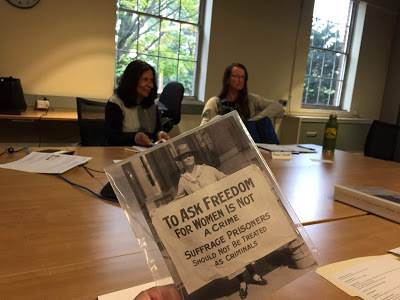 Alice Stokes Paul (1885-1977), in 1917 -- and a view of today's meeting in Vermont.
Alice Stokes Paul (1885-1977), in 1917 -- and a view of today's meeting in Vermont.In the year 2020, we'll mark 100 years since American women gained the right to vote. For some of us, exercising our vote came as a normal mark of adulthood -- and in Vermont, when we sign up to vote also pledge to do it responsibly, using the Freeman's Oath, which in 2002 became the Voter's Oath and gained inclusive language:
§ 42. Voter's qualifications and oathsIs voting any different for women than for men? Percentages of voting women suggest there are real effects of gender ... hard to sort out. Even more than gender today, though, access to voting can be blocked or slowed by disability (I have a sibling whose lack of mobility makes it REALLY hard to get registered), low income (who'll watch the kids? what about loss of pay for that hour off to sign up, when every hour of income matters?), and details like skin color, accented English (even if the person is very educated), and obvious personal choices and beliefs can all interfere.
Every person of the full age of eighteen years who is a citizen of the United States, having resided in this State for the period established by the General Assembly and who is of a quiet and peaceable behavior, and will take the following oath or affirmation, shall be entitled to all the privileges of a voter of this state:
You solemnly swear (or affirm) that whenever you give your vote or suffrage, touching any matter that concerns the State of Vermont, you will do it so as in your conscience you shall judge will most conduce to the best good of the same, as established by the Constitution, without fear or favor of any person.
Today's Montpelier meeting of about 18 women (some in person, some phoning in) to collaborate on preparation for marking 2020 included conversation about most of those factors. It also admitted past detours, with resolve for better present and future actions. The interactions, energy, and respect in the conversation promised an effective mission, strong goals, and exciting events and processes ahead. I learned a lot about how active the League of Women Voters is in Vermont, too, with strong effects that can create change.
Consider this set of mission plus goals from 25 years earlier, in Vermont, to mark 75 years of women voting -- where I was surprised to see the economic focus:
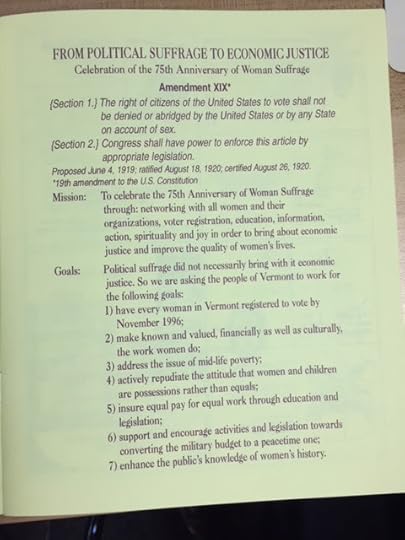
I also learned about a Vermont organization called Change the Story -- came home wearing a pin provided via the Vermont Commission on Women, and checked out the website (http://changethestoryvt.org), discovering the group focuses on the economic status of women in Vermont. Makes sense to me ...
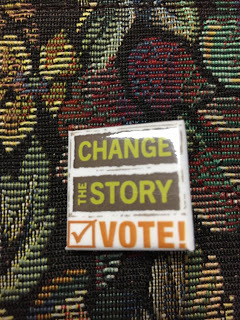 I can hardly wait to see what comes next!
I can hardly wait to see what comes next!
Published on September 25, 2018 13:02
August 19, 2018
House of Dreams: The Life of L. M. Montgomery, by Liz Rosenberg
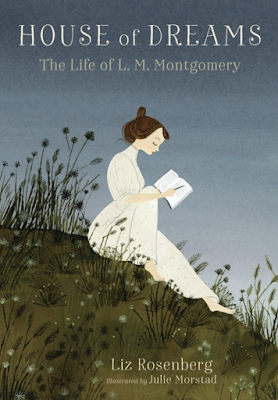 It's daunting to realize how many books and stories L. M. (Lucy Maud) Montgomery wrote, often under conditions of enormous financial or emotional stress, and how well loved they became. This year's biography of the author, by professor and novelist Liz Rosenberg of Binghamton, New York, concludes with a description of the reach of Montgomery's beloved character Anne of Green Gables:
It's daunting to realize how many books and stories L. M. (Lucy Maud) Montgomery wrote, often under conditions of enormous financial or emotional stress, and how well loved they became. This year's biography of the author, by professor and novelist Liz Rosenberg of Binghamton, New York, concludes with a description of the reach of Montgomery's beloved character Anne of Green Gables:The popularity of L. M. Montgomery's writing continues unabated. Maud's books have sold millions of copies. Her work lives on in dozens of forms -- some of which she never knew, and could not have even imagined. Her writing has been successfully adapted to the stage, the movies, and for television, and is available in books, CDs, and DVDs. Discussions of her work abound in journals dedicated to her writings, and in online blogs and articles.Let that be a noted talking point for those explaining the lasting and global effect of children's books and classics about growing up poor and making the best of things. As Rosenberg demonstrates in HOUSE OF DREAMS (a title that reflects the 1917 "Anne" book, Anne's House of Dreams), one persistent and naive author who puts pen to paper every day can eventually see her stories enter the hearts of astonishingly diverse people.
Anne's House of Dreams was distributed to Polish soldiers during World War II to lend them courage and hope. ... Prince Edward Island estimates 350,000 come to visit Green Gables each year. Kate Middleton, as the newlywed wife of Prince William, flew to Prince Edward Island on her honeymoon in honor of the books, citing Montgomery as one of her favorite and most influential authors. ... Her works are treasured by children and adults all over the world -- they are particular favorites of Japanese schoolchildren, fellow islanders living half a world away. ... Her single most beloved and famous book, Anne of Green Gables, has sold more than fifty million copies worldwide and been translated into more than twenty languages.
Rosenberg is a poet and novelist, as well as biographer, and these qualities enable her to narrate Maud's own life of heartbreak with passion, insight, and a sense of pace that feels like a well-spun novel, full of complex characters and twists of plot. Trapped in a dysfunctional family through both poverty and her own sense of loyalty to her grandmother -- a brusque and stern woman who nonetheless made enormous sacrifices so Maud could gain an education and become employed -- this lifelong writer created the personality of an orphaned girl with unfortunate red hair, determined to see and name the beauty of the world around her.
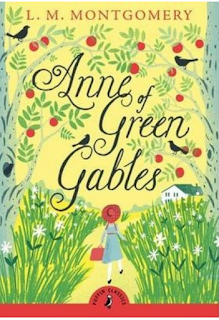 There is certainly a circle of courage in Montgomery's "work and life": The character she gave to Anne connected directly to the better days of her own spirited approach to life. But unlike her protagonist, Maud Montgomery had very few "lucky breaks" in life. Repeatedly "orphaned" in terms of people who should have taken care of her as a child, then disappointed in love and entangled with men whose coping strategies tore her apart, she still maintained her discipline of writing, and fought for publication of her work. At one point one of the most highly paid authors among Canadians, she also saw her work become profitable to an unscrupulous and unpleasant publisher (she did not benefit from the vast earnings of the "Anne" films), barely coped with what was probably bipolar disorder, and gave up her peace of mind as well as her fortune to take care of the (mostly) men who depended on her.
There is certainly a circle of courage in Montgomery's "work and life": The character she gave to Anne connected directly to the better days of her own spirited approach to life. But unlike her protagonist, Maud Montgomery had very few "lucky breaks" in life. Repeatedly "orphaned" in terms of people who should have taken care of her as a child, then disappointed in love and entangled with men whose coping strategies tore her apart, she still maintained her discipline of writing, and fought for publication of her work. At one point one of the most highly paid authors among Canadians, she also saw her work become profitable to an unscrupulous and unpleasant publisher (she did not benefit from the vast earnings of the "Anne" films), barely coped with what was probably bipolar disorder, and gave up her peace of mind as well as her fortune to take care of the (mostly) men who depended on her.The only time that I was able to "put aside" HOUSE OF DREAMS was when I just had to stop to quickly re-read Anne of Green Gables, to feel again the marvelous joy of Anne's self-propelled discoveries of love and life. Then I plunged back into HOUSE OF DREAMS, unwilling to interrupt it again, even through the massive sorrows of Montgomery's pathway.
Many thanks to Rosenberg for this satisfying addition to women's biography, to the insight that an author's life can provide, and to opening a door for younger readers -- from engaged 12-year-olds on up -- to explore how an author and her work can braid and mingle. The publication of this volume by Candlewick Press, with its esteemed standing in libraries, classrooms, and bookshelves of eager readers, makes that intent especially clear. And the tender line drawings by Vancouver, BC, artist Julie Morstad are a perfect match to the book.
I plan to stay grounded in HOUSE OF DREAMS as I set "pen to paper" for my own next novel. What an inspiration to treasure! I'm on my way.
Published on August 19, 2018 12:21
July 17, 2018
Cold Midnight, Chapter 1 -- By Special Request!
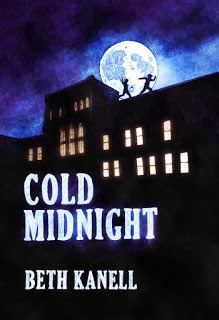
I still have copies available of Cold Midnight, a "YA crossover" mystery set in 1921 in St. Johnsbury, Vermont, and based on a real "cold case" that the town never closed. By special request, here's chapter 1; you can get the softcover book from me, or the ebook online.
Cold Midnight
by Beth Kanell
Autumn 1921
Chapter 1 The new rope worked much better than the knotted strips of sheets. And it was more than twice as long. In the darkness behind the tenement house, untying the knot required her fingers to dig and tug. Claire wished she’d brought a spike or even a nail. A nail – there should be some scattered around on the ground. Easing quietly toward the pool of light spilling from the downstairs parlor, Claire scuffed her shoes until she felt something roll under them, and coaxed it along to where she could see it and pick it up. She moved back against the wall and poked at the knot with the iron point. Done! Claire was used to creeping down the back porches and only using her twisted line of sheeting to drop down the last ten feet to the ground. It could hang there until she returned. But the rope was different: she needed to take it with her so she could get where she needed to go. The smell of tar hung thick in the warm night air. Main Street, just around the corner from the tenement house, gleamed under its new coat of paving. No sense stepping in the soft black ooze – Claire took the back route around the little green-sided Christian Science church to the alley next to Willis’s hardware. Carefully, she coiled the twenty feet of rope over her left shoulder. On tiptoes, she ran up the three flights of fire stairs, avoiding the windows. Now one long stretch, twenty feet high, separated her from the rooftop. She set her fingers and toes into the brickwork and edged upward. After so many times crawling in darkness up the wall, with its fancy brick courses and false window frames extending out as perfect footholds, the climb came easily, up to the last bit where the roof hung over. Until now, the overhang had defeated her. But this time, with her rope, she formed a sling and looped it over a massive iron hook at the roof’s edge, built to grasp the snowload and prevent it from falling on unsuspecting pedestrians in winter. The hook and the rope sling would provide a way to let go of the wall and swing out. She tugged at the sling to make sure the knot would hold. It ought to: a square knot, the way her father had shown her ages ago. Blue funk gripped her stomach for a moment. She twisted her left hand around the rope sling, then snatched at it with her right, flying loose from the wall. Four stories above the ground, she dangled from her rope loop. Keep moving, she told herself, and heaved with both arms, until she figured out how to launch her legs up. The scrape of her boots against the roof startled her. Don’t stop now. It’s just like on the bars of the swing. Go! Seconds later, Claire stood on the roof of the Willis Block for the first time. The size of it had always impressed her, as it stretched across five street-level businesses. Her left arm burned from the rope’s friction, and she rubbed it while she crouched and surveyed this new view of town. She peered down to be sure nobody had seen or heard her – but the coast was clear. First she looked west, up the ridge, and oriented herself by the dark bulk of the ancient pines above the town. She could see the distant cliffs block the starry sky. The grand Bateman mansion spread solidly against the nearer slope, gas lamps twinkling in the upper windows. There were no lights in the long glassed greenhouse beside the mansion, but she saw small reflections of the bright stars of early September. Slowly, Claire turned north, gazing past the short steeple of the Christian Science church to see the massive stone structure of the North Church, then the brick steeple of the Irish Catholic one. Beyond the handful of large homes at the north end of town, the land rose to Mt. Pleasant Cemetery. She bent to rub one knee, realizing she’d scraped that, too. Most likely her stockings would cover it tomorrow, but she would need to be careful that no signs of her adventures showed around her skirt and blouse, or her mother would grow suspicious. Claire swiveled south, toward the dark courthouse with its clock tower, then the imposing halls of the Academy campus – the school halls that she already hated after a single week of classes. Claire frowned fiercely, wishing they’d disappear. For a moment she pondered what it would feel like to set them aflame, the crisp, snapping fire engulfing them in seconds. But she knew it was insane, a wild fantasy she’d never actually try. Her father had warned her about fire-setters and their madness, back before the war, when he still talked to her about real things. Claire closed her eyes and made the final quarter turn to face east, down the slope to the downtown, the railroad, the river beyond. For a moment longer, she stood blind, eyelids clamped together. She stretched her arms and hands wide, feeling the cool night air between her fingers. She sniffed the breeze for river scent, but she couldn’t find it. At last, she lowered her arms and opened her eyes. Ah! Cramped knuckles and scraped knees faded into insignificance. The town lay out before her as if Claire were its only audience. Golden lamplight and silver starlight splashed through and against windows. Halfway down the hill the French Catholic church interrupted with its dark stone steeple. Closer to her, someone pulled a curtain closed at an upper level. A late truck growled as it pulled up Eastern Avenue toward Main Street. A dog began to bark angrily, a second one yelped in conversation, and she caught a hint of a distant shouting voice. They can’t hear me, she thought. They can’t see me. But they are mine, all mine. The bells of North Church tolled the hour: ten o’clock. She resolved to explore her rooftops until midnight struck. Seven buildings linked together meant she could walk all the way from here to the edge of the last roof above Eastern Avenue itself. She twitched her rope to lay it flat on the first section of roof, then started walking. A surprising number of objects rolled under her booted feet as she scuffed slowly along. Although a rounded wedge of moon showed itself above the eastern horizon, it didn’t light the roof. Claire could feel nails, and the snap of twigs, and something soft that might be the remains of a bird. She tried to avoid crushing whatever it was – the poor thing was most likely mangled enough. Plus, she didn’t want to step in anything that would reek of decay. Continuing to escape the house at night depended on not leaving traces that her mother would notice. Her father, of course, wouldn’t notice if she put her muddiest boots directly onto his lap. Placing a hand on a chimney top, she realized someone in the building had lit a fire. Silly thing to do on such a warm night! But on second thought, perhaps it was still warm from cooking supper. At home, supper could take place any time between five and nine o’clock, depending on whether her mother felt exalted that evening. Sometimes Claire’s mother set a row of candles along the table and decorated it to resemble a feast, even when supper was only a reheated slice of Sunday’s pork pie. She’d tear the bread apart with her long slender fingers, instead of slicing it: “This was how his disciples recognized the Lord,” she’d explain. “The way He broke the bread. After He rose again, of course. Drink some wine, Claire. It’s not a sacrament like at church.” “You’ve watered it down,” her father would complain if he happened to be there. And he’d take a draw from his flask instead, then forget to finish eating as he shuffled out of the kitchen to the parlor and its darkness. Her mother’s shoulders would slump, half from plain irritation, half from some deeper wound. “Pray for your father tonight,” she’d instruct Claire. “Forty ‘Hail Marys’ and then the Our Father. He needs to go to confession.” Her voice louder, she’d repeat, “Robert, you need to go to confession. You can’t take Holy Communion until you’ve confessed to the priest.” “Go there yourself, eh,” her father would mumble back, and mutter a curse in French just to annoy her, and drop heavily into his armchair without turning on a lamp. The warm chimney also reminded Claire that she was walking above tenements where people lived, over the shops. She hoped their ceilings muffled her footfalls. Who lived in the rooms just beneath her? Mr. Willis, who owned the hardware? No, he lived lower down, right above his store. This place must be his brother’s, the one with all the small children. The urge seized her to peer through their windows and catch a glimpse of their life. Could she reach the fire stairs behind this section of the store block? She edged eastward, to the back end of the roof, and squinted into the darkness below. She knew there was another set of stairs, but she had left her rope back by the first set. Besides, she didn’t know how far this set went. She’d have to inspect it by daylight before risking the drop. Back to the center again, then south, across the roof of the ladies’ clothing store. Then the two sections joined together below into the grocery and what must be the little bakery. At last she knew she stood above the photographer’s studio. The rising moon lit a low wall in front of her, where the roofline rose to go across the bank at the corner, with a false row of windows along the front. The wide, open space of Eastern Avenue yawned in the darkness below. Across the way was the park, and beyond that, the courthouse. A movement among the bushes caught her eye: a dog, scruffy and slow. She could barely hear its faint snuffling. When the whistling started, she jerked in place, grabbing the chimney nearest to her to stop a wave of vertigo. Her head spun. The sweet pure whistle rose in a tune she knew: “Listen to the mockingbird,” it trilled. The strangeness of it in her hard-luck town, her town viewed from its high Main Street roofs, nearly blinded her. Then the whistle began to dance around the tune, ornamenting it, pouring it into the darkness as if night were shaped with a space that belonged to music and to joy. Just before the tune ended, she realized a boy in dark clothing, with the bulk of a jacket slung over his shoulder, had emerged from the shadows of the park and was walking into the long alley behind the store buildings. By the time she thought to cross the roof and look directly down the side of the building, he had vanished into the darkness, along with his melody. In the boy’s absence, the town laid itself out again, nearly silent. Claire walked the roof in the other direction, back to where her rope lay folded, getting the feel of it into her feet. The false windows rising above the front of the photographer’s building offered a good place to perch, so she circled back there. Where her hand rested on the brick wall, she felt lumps like chewing gum. Bird droppings. She scrubbed her hand against her sweater and stuffed it into a pocket, where her handkerchief sat in a ball. Why would someone build a row of false window arches at the front of a building? Just to make it look taller? There was no glass, nothing behind them except the roof itself. Claire fingered the brick surface carefully before climbing inside an arch, to sit curled within the chilly but strong framework. Looking up the hillside to the west, with the Bateman mansion in the center of her view, she watched the upstairs lamps begin to go out, one after another in a line. The last one lingered a few minutes longer. Someone setting aside his or her clothes, no doubt. Would it be Mr. Bateman himself? No, that upper room must belong to a maid or the cook. Below her, footsteps pattered along Main Street. Somebody was running there, keeping close to the block of buildings. She turned to hook an arm more firmly, then leaned cautiously from her position inside the arch, not wanting to make a sound. The person in the darkness reached the corner of Eastern Avenue and Claire could see enough to be sure it was a man or a very tall, older boy. His arms were pumping and she could hear his breath, ragged and rapid. From above, the cap on his head looked like one of her father’s uniform caps. He stopped, reached out, and pulled the hammer of the fire alarm box. Then he ran. Bells rang loudly in the firehouse down the road and in the Methodist church steeple. Lamps flared higher. Men shouted, and a truck engine roared to life. Claire pressed her back against the wall. Crouching behind the brick edging, she watched: one truck, the pumper; then the second one, its ladders hanging off the end; four men clutching the rails. A fifth man stood by the open doorway, staring down the road, then bolted back inside, shouting again. A harsh charcoal smell filled the night, much stronger than chimney smoke. Not far from her, metal on metal screeched and more shouts echoed as the new fire trucks halted just beyond the courthouse. Hunched low, keeping her balance, she ran to the south end of the line of buildings and saw a red flicker of flame at the side of the boarding house beyond the courthouse park. Her father would be there soon! The fire bells surely had summoned him by now. Any moment, he might wake her mother, too. Claire needed to return to her bed and be under the covers in case they looked into her room. She fled back north along the roofs, fumbled for the loops of her rope, and swung wildly for the steps below.
Published on July 17, 2018 13:40
July 3, 2018
Independence Day for Book Lovers
 Independence Day is such a great holiday in Vermont -- community events, meals shared, LOTS of pies and ice cream, and fireworks in all directions.
Independence Day is such a great holiday in Vermont -- community events, meals shared, LOTS of pies and ice cream, and fireworks in all directions.Many Vermont people will take part in the annual readings from Frederick Douglass's poignant and powerful speech, "What to the Negro Is the Fourth of July?" (Find some of those events here.) A few years ago, I discovered Frederick Douglass had actually spoken in nearby St. Johnsbury, Vermont -- so glad to know this!
I'll also be burrowing into writers' investigations of "independence" in many books, and I appreciated finding this in my e-mail today from New York Times editor Rumaan Alam:
Many great books for children are grounded in American history. When I was younger, two of my favorites were Robert Lawson’s “Mr. Revere and I” and “Ben and Me,” which imagine the horse that Paul Revere rode into history and a mouse who inspired Ben Franklin’s greatest innovations. I’ve got two young readers of my own, now, and one of the books I most enjoy sharing with them is “I, Too, Am America,” which marries illustrations by Bryan Collier with the enduring text by Langston Hughes. My boys are also huge fans of everything Maira Kalman does; she’s written and illustrated two children’s biographies of great presidents: Thomas Jefferson: Life, Liberty and the Pursuit of Everythingand Looking at Lincoln. (Kalman has also published a wonderful illustrated book for adults that includes her thoughts on those presidents and much more, “And the Pursuit of Everything,” which I recommend highly.)So of course, I wrote back to Mr. Alam:
I like your Independence Day suggestions! Here are a couple more, since straightening out US history is so important: Never Caught: The Washingtons' Relentless Pursuit of Their Runaway Slave, Ona Judge (by Erica Armstrong Dunbar); New England Bound: Slavery and Colonization in Early America (by Wendy Warren); The Half Has Never Been Told: Slavery and the Making of American Capitalism (by Edward E. Baptist).What new insight into American history have you found this year? Was a well-written, well-researched book involved?
These interest me because I'm trying to straighten out the picture of Vermont in the years before the Civil War, in The Long Shadow (by Beth Kanell, naturally), which is Book One of the Winds of Freedom (Five Star / Cengage).
Happy Fourth of July!<!-- /* Font Definitions */ @font-face {font-family:"MS 明朝"; mso-font-charset:78; mso-generic-font-family:auto; mso-font-pitch:variable; mso-font-signature:1 134676480 16 0 131072 0;} @font-face {font-family:"Cambria Math"; panose-1:2 4 5 3 5 4 6 3 2 4; mso-font-charset:0; mso-generic-font-family:auto; mso-font-pitch:variable; mso-font-signature:-536870145 1107305727 0 0 415 0;} @font-face {font-family:Georgia; panose-1:2 4 5 2 5 4 5 2 3 3; mso-font-charset:0; mso-generic-font-family:auto; mso-font-pitch:variable; mso-font-signature:647 0 0 0 159 0;} /* Style Definitions */ p.MsoNormal, li.MsoNormal, div.MsoNormal {mso-style-unhide:no; mso-style-qformat:yes; mso-style-parent:""; margin:0in; margin-bottom:.0001pt; mso-pagination:widow-orphan; font-size:12.0pt; font-family:"Times New Roman"; mso-fareast-font-family:"MS 明朝"; mso-fareast-theme-font:minor-fareast;} .MsoChpDefault {mso-style-type:export-only; mso-default-props:yes; font-size:10.0pt; mso-ansi-font-size:10.0pt; mso-bidi-font-size:10.0pt; mso-fareast-font-family:"MS 明朝"; mso-fareast-theme-font:minor-fareast; mso-fareast-language:JA;} @page WordSection1 {size:8.5in 11.0in; margin:1.0in 1.25in 1.0in 1.25in; mso-header-margin:.5in; mso-footer-margin:.5in; mso-paper-source:0;} div.WordSection1 {page:WordSection1;} </style></div>--><style><!-- /* Font Definitions */ @font-face {font-family:"Cambria Math"; panose-1:2 4 5 3 5 4 6 3 2 4; mso-font-charset:0; mso-generic-font-family:auto; mso-font-pitch:variable; mso-font-signature:-536870145 1107305727 0 0 415 0;} @font-face {font-family:Calibri; panose-1:2 15 5 2 2 2 4 3 2 4; mso-font-charset:0; mso-generic-font-family:auto; mso-font-pitch:variable; mso-font-signature:-520092929 1073786111 9 0 415 0;} /* Style Definitions */ p.MsoNormal, li.MsoNormal, div.MsoNormal {mso-style-unhide:no; mso-style-qformat:yes; mso-style-parent:""; margin:0in; margin-bottom:.0001pt; mso-pagination:widow-orphan; font-size:12.0pt; font-family:"Times New Roman"; mso-fareast-font-family:"Times New Roman";} p.MsoCommentText, li.MsoCommentText, div.MsoCommentText {mso-style-noshow:yes; mso-style-priority:99; mso-style-link:"Comment Text Char"; margin:0in; margin-bottom:.0001pt; mso-pagination:widow-orphan; font-size:10.0pt; font-family:"Times New Roman"; mso-fareast-font-family:"Times New Roman";} span.CommentTextChar {mso-style-name:"Comment Text Char"; mso-style-noshow:yes; mso-style-priority:99; mso-style-unhide:no; mso-style-locked:yes; mso-style-link:"Comment Text"; font-family:"Times New Roman"; mso-ascii-font-family:"Times New Roman"; mso-fareast-font-family:"Times New Roman"; mso-hansi-font-family:"Times New Roman";} .MsoChpDefault {mso-style-type:export-only; mso-default-props:yes; font-size:10.0pt; mso-ansi-font-size:10.0pt; mso-bidi-font-size:10.0pt; font-family:Calibri; mso-ascii-font-family:Calibri; mso-fareast-font-family:Calibri; mso-hansi-font-family:Calibri;} @page WordSection1 {size:8.5in 11.0in; margin:1.0in 1.25in 1.0in 1.25in; mso-header-margin:.5in; mso-footer-margin:.5in; mso-paper-source:0;} div.WordSection1 {page:WordSection1;} </style> -->
Published on July 03, 2018 10:33
March 29, 2018
Updated: Talking about THE LONG SHADOW: Events
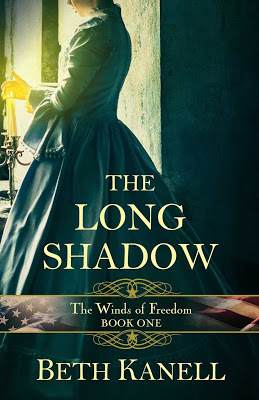
“One can practically smell the stench of the town drunk and feel the cold in the root cellars . . . the characters are well-drawn. Both adults and teens should enjoy the story and look forward to Kanell’s next book.”-- Booklist, The American Library Association
One of the pleasures of bringing out a new book is bringing it TO people! I'm looking forward to sharing some of the stories that led to THE LONG SHADOW as I meet with groups over the next few months. Here's the schedule so far:
Wed. April 25, 6:30 pm: Launch Day! Join me at the Lower Waterford Congregational Church for a book talk co-sponsored by the Davies Memorial Library and the Waterford Historical Society. Hear about the local conversations that planted the seeds for this adventure tale of three teenagers in "North Upton" (a pen name for North Danville, Vermont) in 1850, with the Civil War barely a cloud in the distance. March snowstorm? Catamount? Alice and Jerushah will have to handle those, but what can they do to support Sarah as she copes with a terrifying possibility?
Fri. April 27, noon to 5 pm: Vermont Maple Festival, St. Albans, my annual visit to this exhilarating event and welcoming community! Signed books available, and lots of conversation about writing, Vermont history, and more. http://www.vtmaplefestival.org/schedule-of-events/4388748.html
Sat. April 28, morning: Green Mountain Books, Lyndonville. Copies of all FOUR novels available! Discover the connection between THE LONG SHADOW and The Secret Room.
Wed. May 2, 7 pm, North Danville at the Brainerd Memorial Library: how North Danville's own history inspired THE LONG SHADOW, how the characters got their names, what the Sanborns have to do with it all, and what Gerry LaMothe contributed -- as well as lively stories!
Tues. May 8, 2 pm, at Danville School (grade 8 only, in the library): Eighth graders, I'm counting on you to ask the best questions! See you soon.
Thurs. May 17, 7 p.m., Barnet Public Library (neighbors and friends from years ago and today!).
Tues. May 22, evening, with Agatha Award-nominated author Edith Maxwell, at Water Street Bookstore, Exeter, NH. We'll talk Quaker stories and history, as well as our books.
Sat. June 9, 1 p.m., Goodrich Memorial Library, Newport, Vermont, with Larry Bradley of Nevermore Books. (Note to myself: leave time to explore this fascinating library again!)
Wed. June 13, 7 pm, St. Johnsbury Athenaeum: What are the Big Issues of our time and our community? Can they really be tackled through historical fiction? Who was Ruth Farrow, how did she (really) live in St J, and what were the real and possible contributions to Abolition by the area's big-name thinkers and action people, like Thaddeus Stevens, Dr. Jewitt, and the Fairbanks family? Let's challenge each other.
Tues. June 19, 11 a.m., Danville, Vermont, the Pope Memorial Library. Let's talk town history, as well as why this book "belongs" here!
Watch for news about the Shadow Photo Collection ...
Published on March 29, 2018 13:57
Talking about THE LONG SHADOW: Events

“One can practically smell the stench of the town drunk and feel the cold in the root cellars . . . the characters are well-drawn. Both adults and teens should enjoy the story and look forward to Kanell’s next book.”-- Booklist, The American Library Association
One of the pleasures of bringing out a new book is bringing it TO people! I'm looking forward to sharing some of the stories that led to THE LONG SHADOW as I meet with groups over the next few months. Here's the schedule so far, all in Vermont:
April 12, Kingdom Career Connect at Lyndon State College (only for the students whose schools are taking part)
Wed. April 25, 6:30 pm: Launch Day! Join me at the Lower Waterford Congregational Church for a book talk co-sponsored by the Davies Memorial Library and the Waterford Historical Society. Hear about the local conversations that planted the seeds for this adventure tale of three teenagers in "North Upton" (a pen name for North Danville, Vermont) in 1850, with the Civil War barely a cloud in the distance. March snowstorm? Catamount? Alice and Jerushah will have to handle those, but what can they do to support Sarah as she copes with a terrifying possibility?
Fri. April 27, noon to 5 pm: Vermont Maple Festival, St. Albans, my annual visit to this exhilarating event and welcoming community! Signed books available, and lots of conversation about writing, Vermont history, and more. http://www.vtmaplefestival.org/schedule-of-events/4388748.html
Sat. April 28, morning: Green Mountain Books & Prints, Lyndonville. Copies of all FOUR novels available! Discover the connection between THE LONG SHADOW and The Secret Room.
Wed. May 2, 7 pm, North Danville at the Brainerd Memorial Library: how North Danville's own history inspired THE LONG SHADOW, how the characters got their names, what the Sanborns have to do with it all, and what Gerry LaMothe contributed -- as well as lively stories!
Tues. May 9, 2 pm, at Danville School (grade 8 only, in the library): Eighth graders, I'm counting on you to ask the best questions! See you soon.
Wed. June 13, 7 pm, St. Johnsbury Athenaeum: What are the Big Issues of our time and our community? Can they really be tackled through historical fiction? Who was Ruth Farrow, how did she (really) live in St J, and what were the real and possible contributions to Abolition by the area's big-name thinkers and action people, like Thaddeus Stevens, Dr. Jewitt, and the Fairbanks family? Let's challenge each other.
Published on March 29, 2018 13:57
February 18, 2018
Saying Goodbye to the Underground Railroad Myths
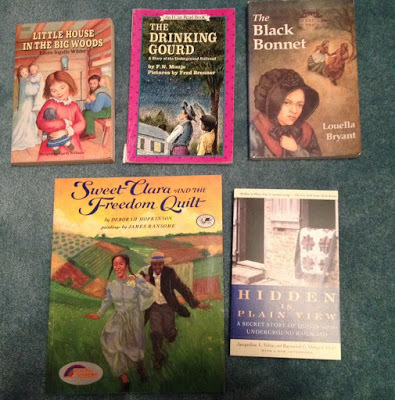 One of the hard parts of growing wiser and kinder is saying goodbye to some things we once thought were wise and kind -- but turned out not to be. For me, one of the sad farewells to make involved the Little House books of Laura Ingalls Wilder ... a series I enjoyed as a youngster, imagining myself as part of the cozy little family that moved West along with the American frontier.
One of the hard parts of growing wiser and kinder is saying goodbye to some things we once thought were wise and kind -- but turned out not to be. For me, one of the sad farewells to make involved the Little House books of Laura Ingalls Wilder ... a series I enjoyed as a youngster, imagining myself as part of the cozy little family that moved West along with the American frontier.When I "grew up" in terms of historical fiction, I began to realize the harm those books can do, in particular Laura's mother's opinion that Native Americans were dangerous and should be killed -- after, of course, depriving them of their lands and customs. It was a painful change to make, to see the books as only "reference" for folk ways and for traditional American White bigotry. It still hurts.
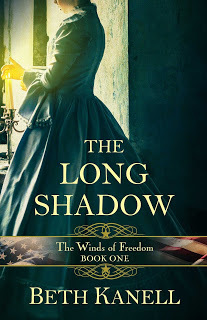 With that new awareness came the realization that many books for children in particular embrace myths that do harm. The books pictured here -- one of which is actually sold as nonfiction -- have problems in terms of the history they teach and the myths they encourage. Because I care about young readers having good books available that show more truthful accounts of the past, I dug into both American and Vermont research on the 1800s. And then I got to work and wrote THE LONG SHADOW, an adventure of three teenage girls in 1850 in Vermont's Northeast Kingdom. The book will be published in about 8 weeks, on April 18, 2018.
With that new awareness came the realization that many books for children in particular embrace myths that do harm. The books pictured here -- one of which is actually sold as nonfiction -- have problems in terms of the history they teach and the myths they encourage. Because I care about young readers having good books available that show more truthful accounts of the past, I dug into both American and Vermont research on the 1800s. And then I got to work and wrote THE LONG SHADOW, an adventure of three teenage girls in 1850 in Vermont's Northeast Kingdom. The book will be published in about 8 weeks, on April 18, 2018.For a quick summary of "what's wrong with the Underground Railroad myths," check this succinct and authoritative version provided by Prof. Henry Louis Gates.
And for more discussion, join me to learn about my new book at a local bookstore, or on the radio, or invite me to bring the conversation to your club, church, or classroom. After all -- that's why I wrote this book. So that you and I could talk about it all.
Published on February 18, 2018 14:20
February 12, 2018
Lincoln's Birthday ... and Thaddeus Stevens on My Mind
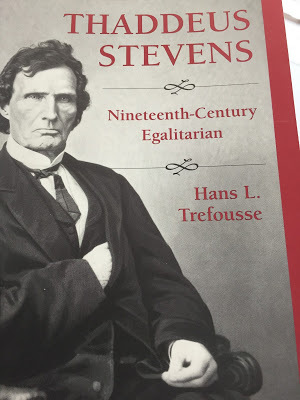
"President's Day" is still a week away, but today, February 12, is the date that is Abraham Lincoln's birthday. When I was growing up, schools celebrated it -- not as a day off, but as a day to pay attention.
Today in our era marked by harsh political conflict and skyrocketing awareness of the way America's centuries of enslavement have injured our people, it's a good day for learning more about our past and choosing ways to make the present and future better, I believe.
So I paused this morning to check what Abraham Lincoln was doing in 1850, the year when my "Winds of Freedom" series opens with the book The Long Shadow (publication date April 18, 2018). In that year, Lincoln was still practicing law in Springfield, Illinois, where he took on quite a few transportation cases. He also gained a patent of his own for a boating invention. He'd already served one term as a legislator, and opposed the land grab of the Mexican-American war; that war ended two years earlier, marking his first contribution to national affairs. He wouldn't speak out again until 1854.
But in 1850, an ardent freedom fighter from Vermont, transplanted to Pennsylvania, took a powerful stance in Congress to oppose slavery. That voice came from Thaddeus Stevens, and it echoes many others, especially the voices of America's Quakers, who pointed bluntly to the evil of humans being "owned" by others. "Chattel slavery," they spoke of -- "chattel" refers to personal property, and unlike, say, indentured servants, chattel slaves could be transferred by will or by bill of sale.
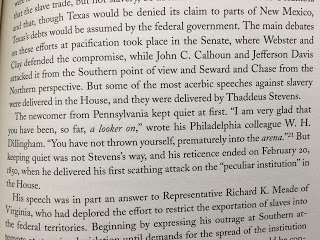 Yes, you'll find actions by Thaddeus Stevens influencing Vermont village life in The Long Shadow. Importantly, the choices taking place in this book are made by women who choose to take action -- protagonist Alice Sanborn, her best friend Jerusha, and their younger and very dear friend Sarah, with her dark skin and desperate longing for her family, still enslaved but with hope of purchasing their freedom. And Miss Ruth Farrow and the Mero family -- historically "real" Black Americans who lived in my part of Vermont in 1850.
Yes, you'll find actions by Thaddeus Stevens influencing Vermont village life in The Long Shadow. Importantly, the choices taking place in this book are made by women who choose to take action -- protagonist Alice Sanborn, her best friend Jerusha, and their younger and very dear friend Sarah, with her dark skin and desperate longing for her family, still enslaved but with hope of purchasing their freedom. And Miss Ruth Farrow and the Mero family -- historically "real" Black Americans who lived in my part of Vermont in 1850.Each of us has something to contribute to making the world a more just and valued place to live. For me, it's speaking of how things really were in 1850 -- here in the Green Mountains of Vermont, where reading the words of Thaddeus Stevens gave a fierce and upright example.
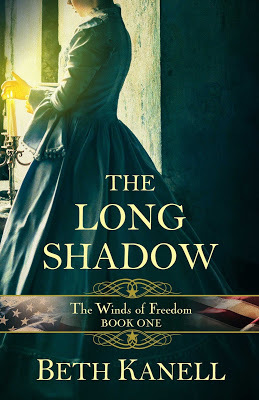
Published on February 12, 2018 08:07
January 17, 2018
An Update to Eleanor Perry Conwell's Provincetown Story
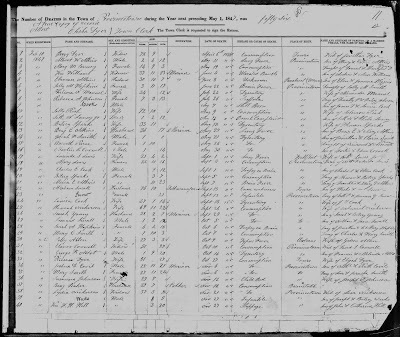
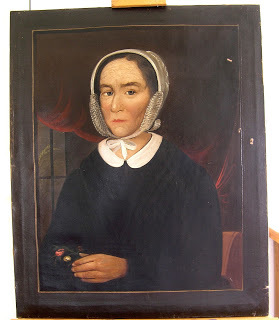 Research always makes up the background of the Vermont fiction that I write. A few years ago, I pulled out "consumption" statistics for this area in the early 1900s -- that was the final stage of tuberculosis (TB), in general. Last week, I found the death record for 4-great grandmother Eleanor Perry Conwell, whose "portrait" (by William Matthew Prior) goes to auction at Sotheby's this week. What a shock to see the cause listed as consumption. I hope the sale of her portrait will help her story of courage and New England initiative to live on. [More on the portrait here.]
Research always makes up the background of the Vermont fiction that I write. A few years ago, I pulled out "consumption" statistics for this area in the early 1900s -- that was the final stage of tuberculosis (TB), in general. Last week, I found the death record for 4-great grandmother Eleanor Perry Conwell, whose "portrait" (by William Matthew Prior) goes to auction at Sotheby's this week. What a shock to see the cause listed as consumption. I hope the sale of her portrait will help her story of courage and New England initiative to live on. [More on the portrait here.]
Published on January 17, 2018 14:55



